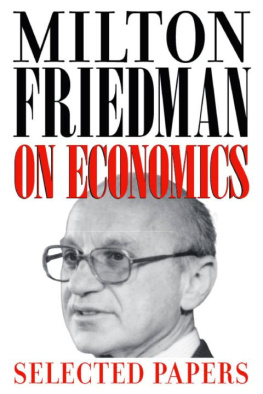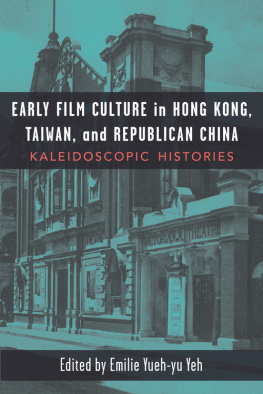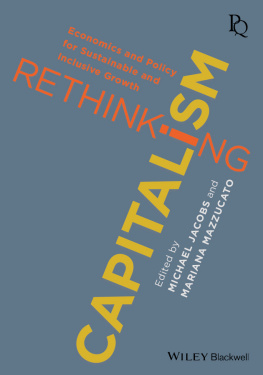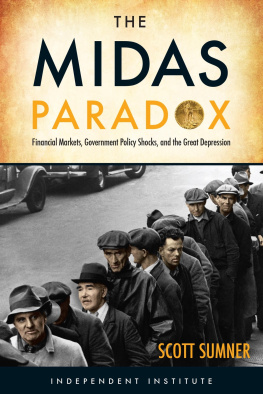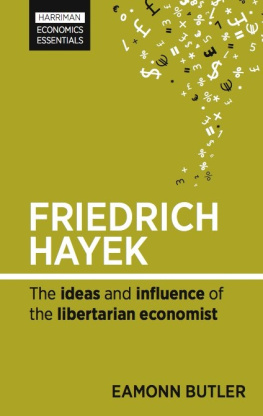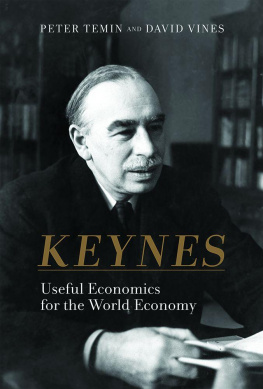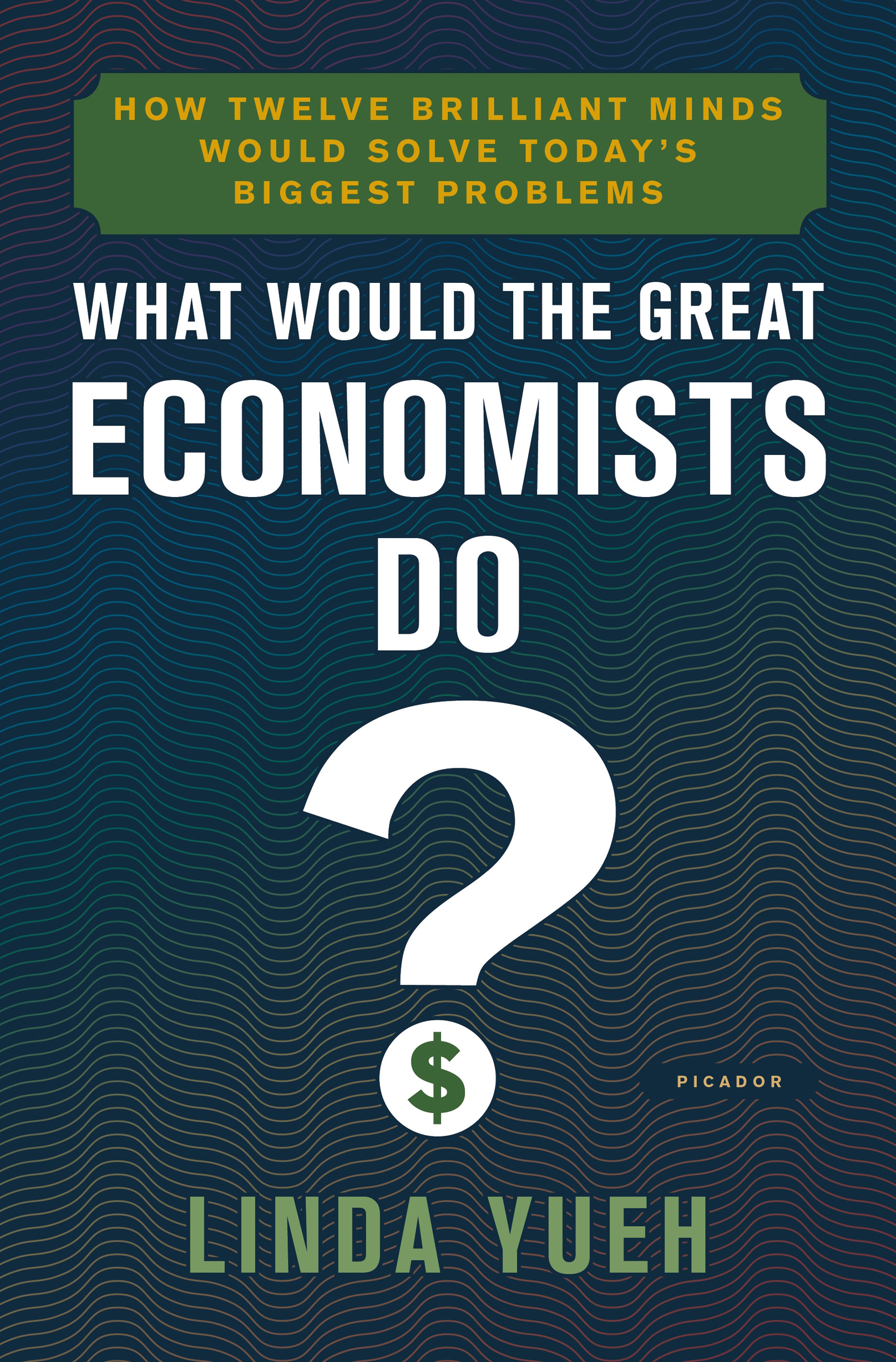Contents
Guide
Pagebreaks of the print version

The author and publisher have provided this e-book to you for your personal use only. You may not make this e-book publicly available in any way. Copyright infringement is against the law. If you believe the copy of this e-book you are reading infringes on the authors copyright, please notify the publisher at: us.macmillanusa.com/piracy.
To my family
During times of fundamental change, economic expertise is in demand. Who better to help shape our economic future than the Great Economists? Their thinking transformed the modern economy into one characterized by unprecedented prosperity, relatively speaking, in even the poorest countries. Those ideas from the past can help guide us as we confront todays economic challenges.
Now is an ideal time to assess where the world economy is headed. Having come through the global financial crisis of 2008 and the Great Recession that followed it, the US , Britain, the European Union, Japan, China, and others are experiencing significant challenges to growing their economies and generating wealth. America, for long the leading economic engine of the world, faces the prospect of slowing growth as slow wage growth weighs on its future. In Britain, weak productivity growth and the historic referendum of June 2016 that resulted in a vote to leave the European Union will affect the countrys economy for years to come. The EU , meanwhile, faces difficult questions about how to reform the euro areas economy to generate growth while sharing a single currency, the euro. Concerns over slow growth have long confronted Japan, which is at the forefront of a number of innovative economic policies to energize its sluggish economy, while China, too, faces structural challenges as it attempts to join the ranks of the worlds rich countries. Emerging economies such as those in Asia, Africa, Latin America, and eastern Europe are also in the spotlight. After years of strong growth, they are slowing down, which raises the question whether these nations will have enough economic momentum left to eradicate poverty within their borders. Yet, we also live during a time of rapid technological change, much like the previous Industrial Revolutions that raised our living standards. Well also consider what drives innovation and how to increase economic growth.
* * *
Who, then, were these Great Economists whose theories changed the world and whose ideas can help us with our challenges today? It was a difficult choice to make. Applying the criterion that their work must have direct implications for our current economic problems helped a little, but there remain many not on my list who might arguably have been included. Hyman Minsky, for example, who is discussed in the Irving Fisher chapter because the pairs combined thinking helps us better to understand the nature of financial crises. And Paul Samuelsons ideas on the distributional impact of international trade builds on the work of David Ricardo, so his thinking provides considerable insight into how those who have lost out in the globalization process discussed in the Epilogue might better manage their predicament.
This leads on to my second qualifier, which is that my selections also reflect the issues that I have chosen to focus on. Choices had to be made, so I have whittled a huge list down to one that is centred on economic growth that is, the rate and the quality of development. How economies grow will be affected by the policy choices taken after the worst banking crash in a century and in the context of a globalized world. The 2008 financial crisis and the rise of emerging markets are among the fundamental factors in the past few decades that have transformed and will continue to reshape the world economy. The crisis showed that some of the old ways of growing an economy are unsustainable, while the fast growth of a number of developing countries suggests that its time to examine how they did that and what it means for big global challenges such as eradicating poverty. Some countries have already confronted some of these issues, and therefore hold potential lessons for other nations. For instance, what can we learn from how the US and UK have been re-examining their growth drivers after the 2008 crisis, or how China has emerged as a major economy so rapidly? Other examples include how Europe is planning to increase investment to boost economic growth, and Japans attempts to end decades of economic stagnation through massive government intervention. So, the quality and nature of economic growth will be central to this book.
You will note that I have largely chosen economists from an earlier vintage. The Greats, unsurprisingly, tend to focus on big general questions, such as growth, innovation and the nature of markets. Of course, there are eminent economists who are currently working on key problems. Many of the recent Nobel laureates are actively engaged in current policy debates, such as raising economic growth rates and assessing the role of government spending, but their research is rooted in the work of the originators of the general models that form the foundation of economics. This book reveals who those Great Economists were, where their ideas came from and how their insights have shaped economic thinking.
Unsurprisingly, my first subject is Adam Smith. It is almost a truism that all economists first turn to Smith when confronted with an economic question. I was reminded of it recently when I presented a BBC radio programme. I asked an academic why we tend to overlook the dominant services sector and instead focus on manufacturing, which comprises only around one-tenth of the British and American economies. He referred immediately to Adam Smith, who thought that the services sector was unproductive. Smith believed that the sector was comprised of buffoons, musicians, opera-singers, whose output could not be traded and therefore did not add to national output in the same way as manufacturing. Smith was, naturally, a product of his times, which witnessed the advent of industrialization that led to an unprecedented increase in incomes and living standards. His 1776 The Wealth of Nations is the seminal work on the subject. Smiths legacy is evident in nearly every aspect of economics. We still view the economy through the lens he fashioned.
So, Adam Smith is the first Great Economist in the book. His idea of the invisible hand of market forces meaning the innate effects of supply and demand, rather than direct intervention by governments or other institutions is the foundation of economic theory. As I explored in that Radio 4 programme, the British government is trying to rebalance the economy towards making things once again, after the 2008 crisis revealed the downsides of relying too much on financial services. So far they havent succeeded. A decade later, the services sector has recovered to pre-recession levels, while manufacturing has not. And its not just Britain. America, China and other major economies are also seeking to rebalance their economies so that they can grow in a more sustainable fashion. What would Adam Smith say about these attempts? How would he reconcile his affinity for manufacturing with an aversion to governments intervening in the workings of the invisible hand?
An economist inspired by Adam Smith later became the father of international trade. In 1817 David Ricardo formalized the theory of comparative advantage that shows how every country benefits from free trade. This is true even if that country is worse than every other country in the world at producing everything. It should still focus on making what it was relatively less bad at, and specializing and trading would benefit it as well as the rest of the world. But, what if the result of trading on the basis of comparative advantage is that countries like America and Britain run persistent trade deficits, meaning that the value of the goods they import outstrips the value of their exports? What would Ricardo advise governments to do?



